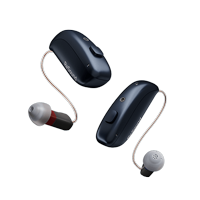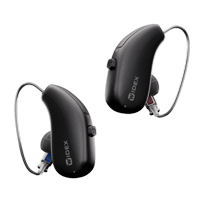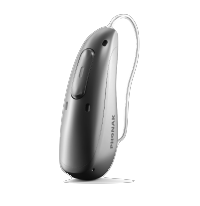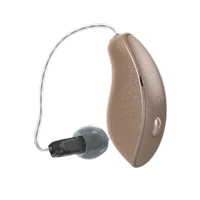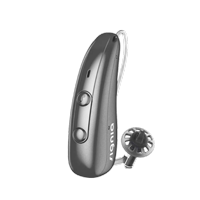The Future of Hearing Health: How AI-Powered Hearing Aids Are Revolutionizing Preventive Healthcare

The Evolution of Wearable Health Technology
Wearable health devices have transformed dramatically over the past decade. What began as simple step counters have evolved into sophisticated health monitoring systems that track everything from heart rate and blood oxygen levels to sleep quality and physical activity. However, the most revolutionary development isn’t coming from Silicon Valley—it’s emerging from the hearing health industry.
Advanced hearing aids with embedded sensors and artificial intelligence capabilities are becoming powerful multipurpose health devices that go far beyond simply amplifying sound. These innovative devices are leading a healthcare revolution by providing continuous, real-time health monitoring through technology that millions of people already wear daily.
Hearing Aids as Preventive Healthcare Tools
Modern hearing aids equipped with AI and sensors are uniquely positioned to serve as comprehensive health monitoring devices. Starkey’s Edge AI hearing aids exemplify this technological leap, featuring embedded sensors that transform these devices into complete health monitoring solutions.
Key Health Monitoring Capabilities
- Physical Activity Tracking: Monitors steps, movement, and exercise patterns
- Fall Detection and Prevention: Detects falls and sends alerts to emergency contacts
- Fall Risk Assessment: Evaluates gait and balance to prevent incidents before they occur
- Social Engagement Monitoring: Tracks social interaction as a measure of cognitive health
- Real-time Health Insights: Provides data for users and healthcare providers
“The advancement of AI and integration into everyday devices can empower individuals to take control of their health by enhancing accessibility to critical health assessments,” explains Dr. Achin Bhowmik, Chief Technology Officer and Executive Vice President of Engineering at Starkey.
The Fall Prevention Revolution
Falls represent one of the most significant preventable health challenges facing older adults today. According to the CDC, one in four seniors experiences a fall each year, with devastating consequences that include 3 million emergency department visits, 800,000 hospitalizations, and 32,000 deaths annually.
The economic impact is equally staggering, with medical costs approaching $50 billion per year. People with hearing loss are at even higher risk due to reduced spatial awareness and the brain’s compromised ability to integrate sensory input.
From Reactive to Preventive Care
AI-powered hearing aids are addressing this challenge through proactive monitoring and risk assessment. Unlike traditional fall detection devices that only respond after a fall has occurred, advanced hearing aids can:
- Analyze gait and balance patterns to identify subtle changes
- Calculate fall risk scores based on movement data
- Provide early warnings when risky patterns are detected
- Suggest interventions before a fall occurs
This shift from reactive to preventive care represents a fundamental transformation in how we approach senior health and safety.
Beyond Fall Prevention: Comprehensive Health Monitoring
The potential for AI-enhanced hearing aids extends far beyond fall prevention. These devices are ideally positioned to monitor several key health metrics:
Cognitive Health Tracking
Research has established clear links between hearing loss and cognitive decline. Advanced hearing aids can now monitor cognitive health indicators by tracking:
- Social engagement frequency
- Conversation participation
- Environmental sound processing
- Speech understanding in complex settings
These metrics provide valuable early indicators of potential cognitive changes, allowing for earlier intervention.
Cardiovascular Monitoring
The unique placement of hearing aids makes them ideal for monitoring certain cardiovascular metrics:
- Pulse rate tracking
- Blood flow changes
- Potential future applications for blood pressure monitoring
Physical Activity Assessment
Comprehensive activity monitoring provides insights into overall health:
- Daily step counts
- Activity duration and intensity
- Calorie expenditure estimates
- Rest and recovery patterns
The Privacy and Security Imperative
As with any health monitoring technology, privacy and security concerns must be addressed. Responsible manufacturers like Starkey implement robust protection measures:
- End-to-end encryption of health data
- User control over data sharing
- Compliance with healthcare privacy regulations
- Transparent data usage policies
Dr. Bhowmik acknowledges these challenges, noting: “We need to continue to recognize the risks of AI: What could go wrong and how it could be used negatively, and combatting those things to ensure privacy and security is a constant battle.”
Bridging Healthcare Gaps
One of the most promising aspects of AI-powered hearing aids is their potential to address healthcare disparities, particularly for those in rural or underserved communities. These devices can:
- Provide remote health monitoring without requiring in-person visits
- Reduce the need for specialized equipment by embedding sensors in everyday devices
- Enable virtual care for health assessments that would otherwise require travel
- Alert healthcare providers to potential issues before they become emergencies
This capability is particularly valuable for fall risk assessments, which traditionally require specialized equipment and in-person evaluations. Virtual care enabled by these devices could eliminate geographical barriers to receiving preventive healthcare.
Overcoming Adoption Challenges
Despite their remarkable potential, several challenges must be addressed to increase adoption of these advanced hearing devices:
Awareness and Perception
Many people are still unaware of the capabilities of modern hearing aids. Educational efforts are needed to highlight their expanded functionality beyond hearing amplification.
Accessibility and Affordability
Cost remains a significant barrier for many potential users. Industry efforts to improve affordability, combined with potential insurance coverage for preventive health features, could increase access.
User Experience
Simplifying interfaces and ensuring ease of use is essential, particularly for older adults who may be less comfortable with technology.
The Future of AI-Enhanced Hearing Health
The horizon for AI-powered hearing aids continues to expand. Future developments may include:
- Integration with broader healthcare systems and electronic medical records
- Enhanced brain-computer interfaces for more intuitive operation
- Expanded health monitoring capabilities, including potential detection of:
- Early warning signs of stroke
- Irregular heart rhythms
- Respiratory patterns
- Sleep quality metrics
As Dr. Bhowmik envisions: “These new developments open the door to a future of proactive and anticipatory healthcare solutions, leading to safer and healthier lives. This is just the beginning of a move toward smarter and more integrated health solutions.”
Experience the Future of Hearing Health Today
At Cal Hearing, we’re committed to providing our patients with access to the most advanced hearing technology available.
If you’re interested in exploring how these revolutionary devices might benefit you or a loved one, we invite you to schedule a consultation with our hearing healthcare professionals.

About the Expert: Dr. Achin Bhowmik
Dr. Achin Bhowmik serves as Chief Technology Officer and Executive Vice President of Engineering at Starkey. He leads the company’s technology strategy, global research, and product development, transforming hearing aids into multifunctional health and communication devices with advanced sensors and artificial intelligence.
Before joining Starkey, Dr. Bhowmik was Vice President and General Manager of the Perceptual Computing Group at Intel Corporation, where he managed R&D, engineering, and business operations in 3D sensing, computer vision, AI, autonomous robots, and virtual reality technologies.
Dr. Bhowmik is an adjunct professor at Stanford University School of Medicine and Wu Tsai Neurosciences Institute. He is a fellow of the Institute of Electrical and Electronics Engineers (IEEE), fellow of the Asia-Pacific Artificial Intelligence Association (AAIA), and fellow and president of the Society for Information Display (SID). He has authored over 200 publications, including two books and 80 granted patents.



